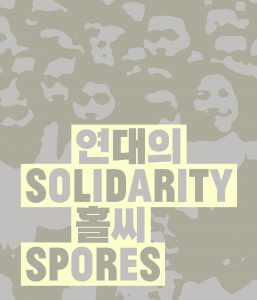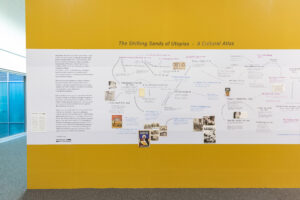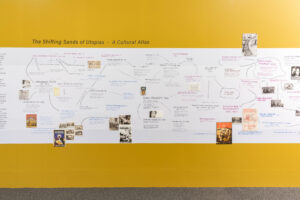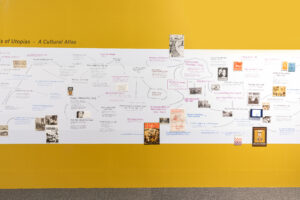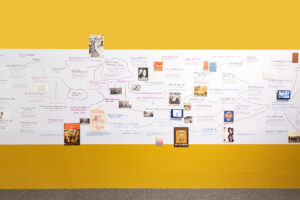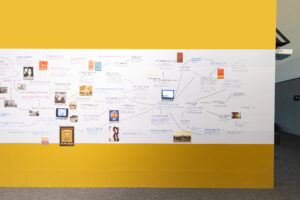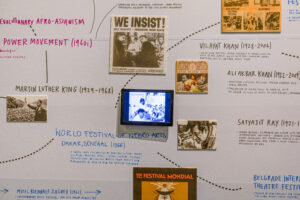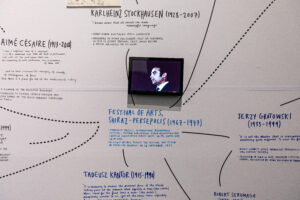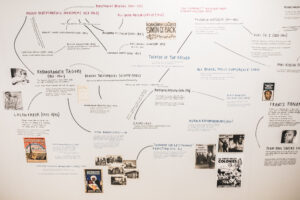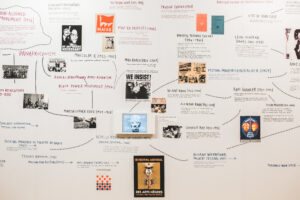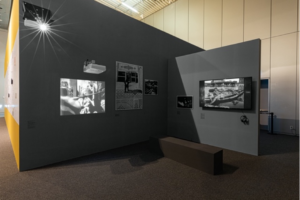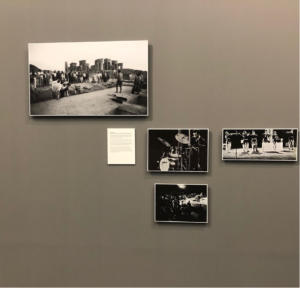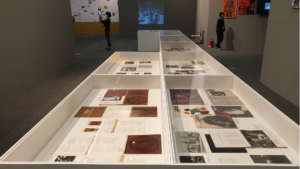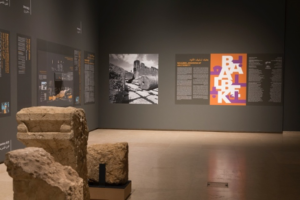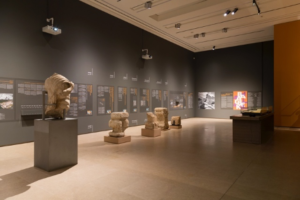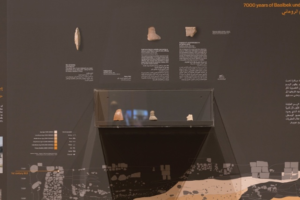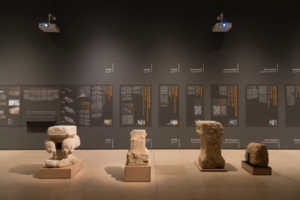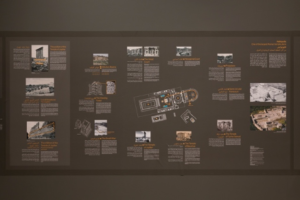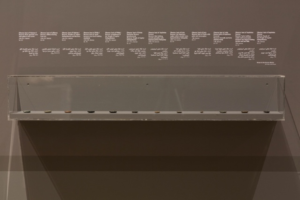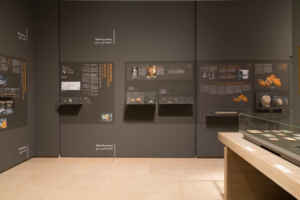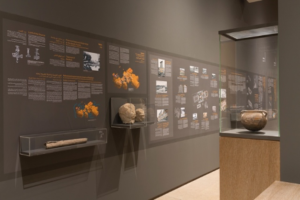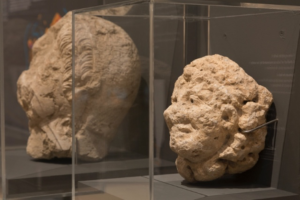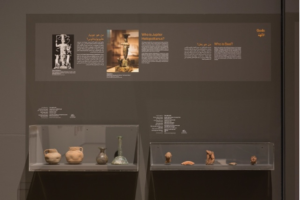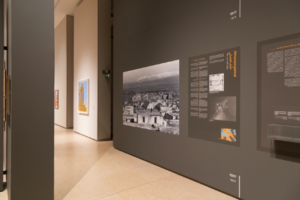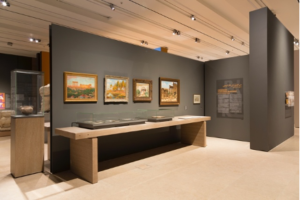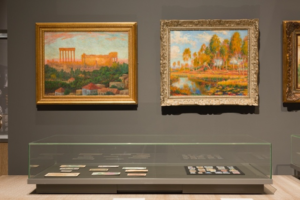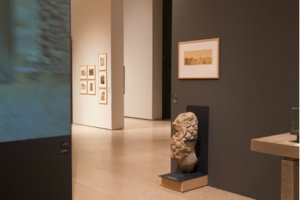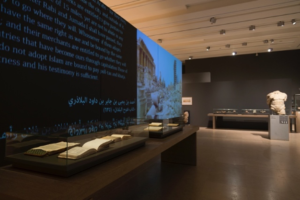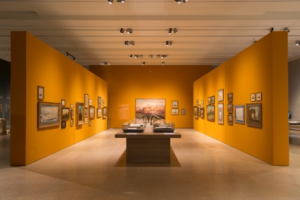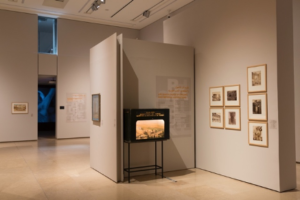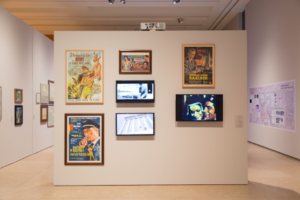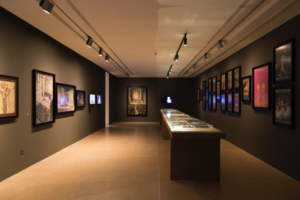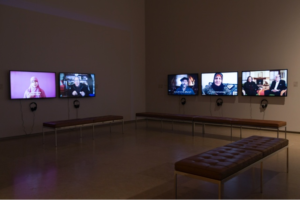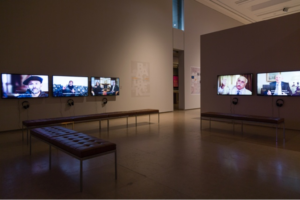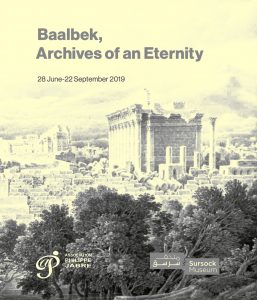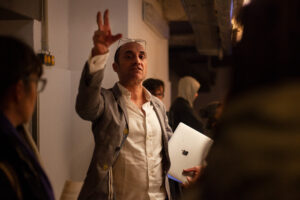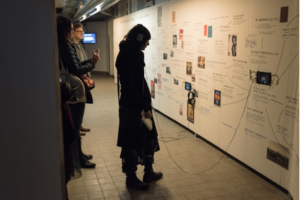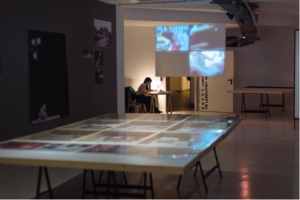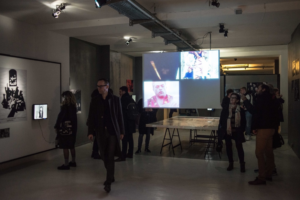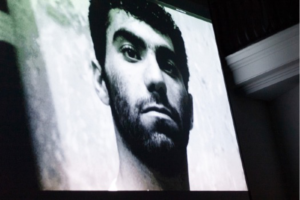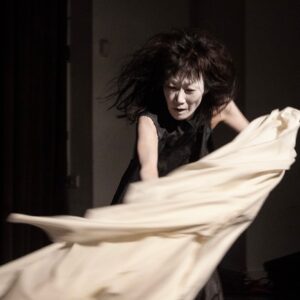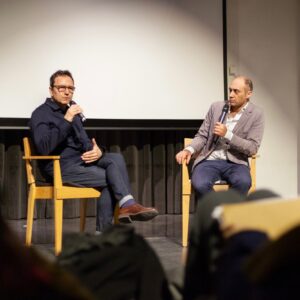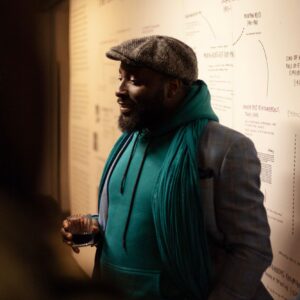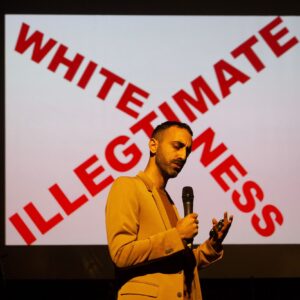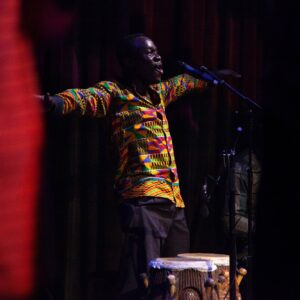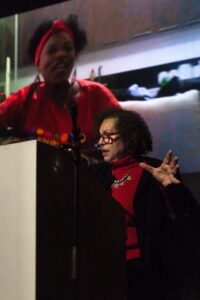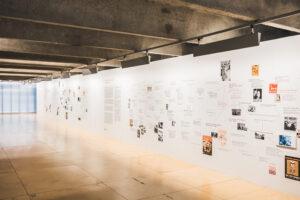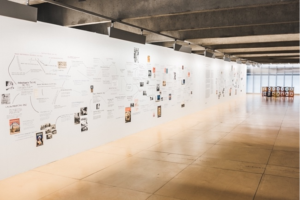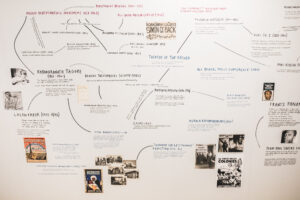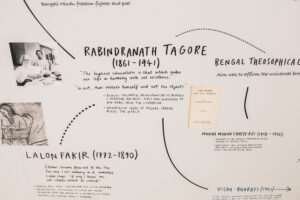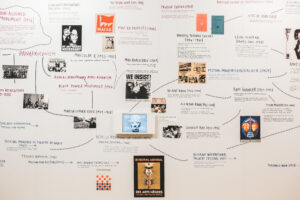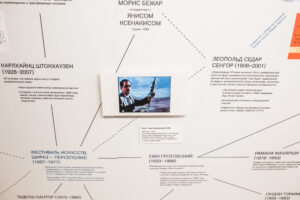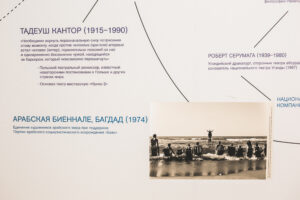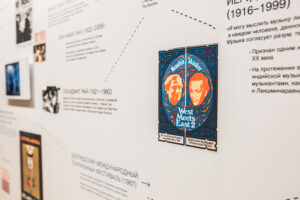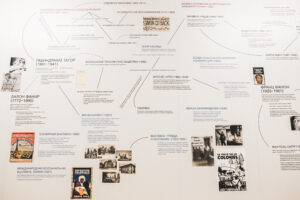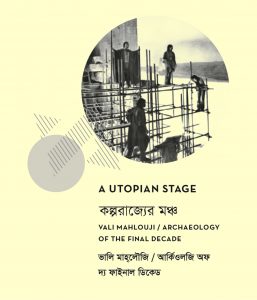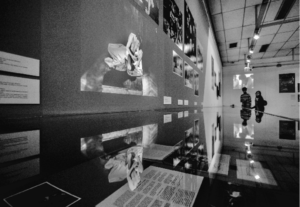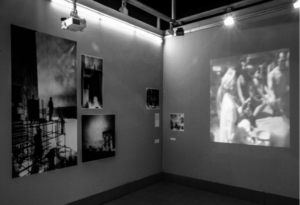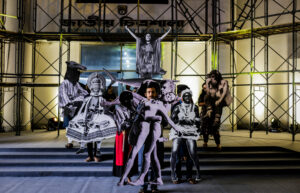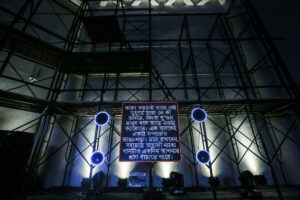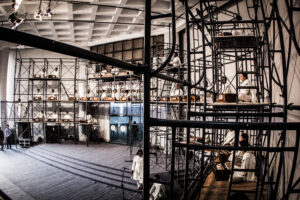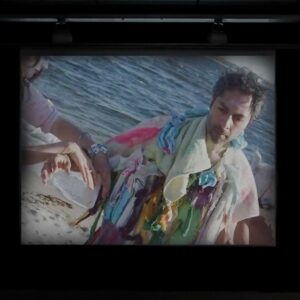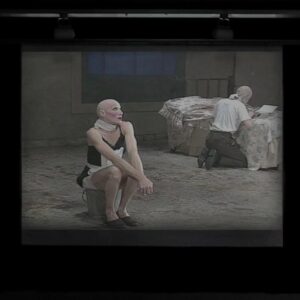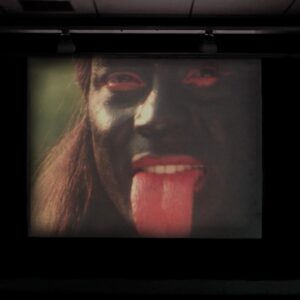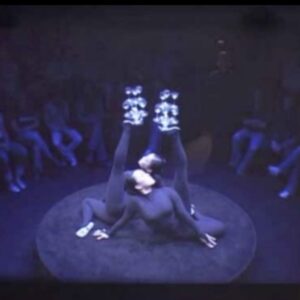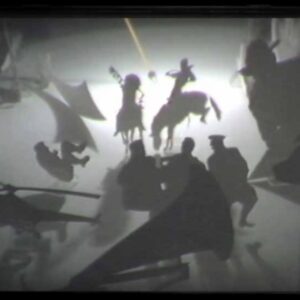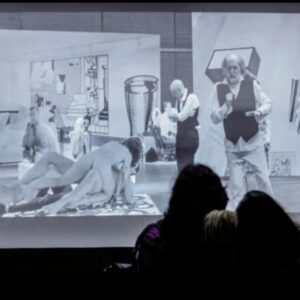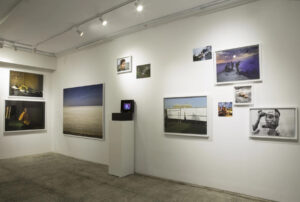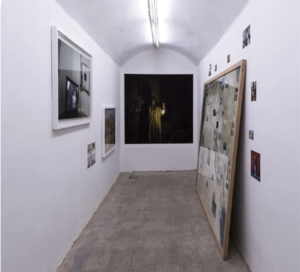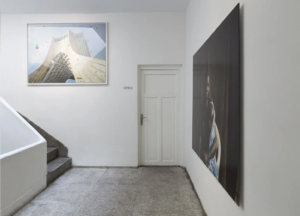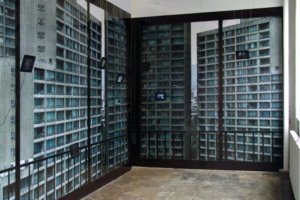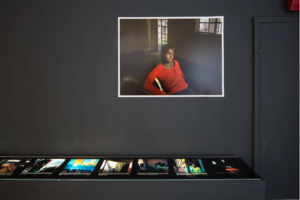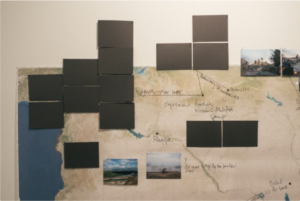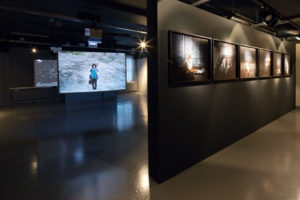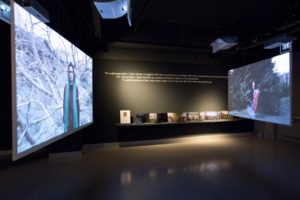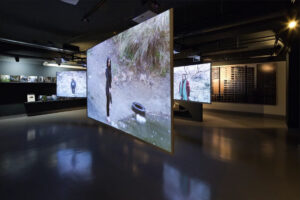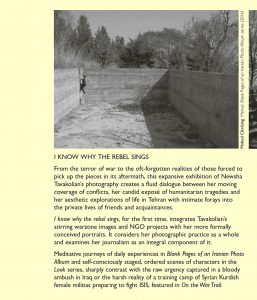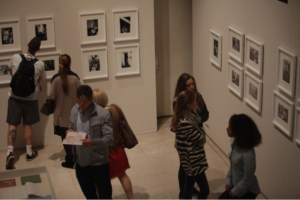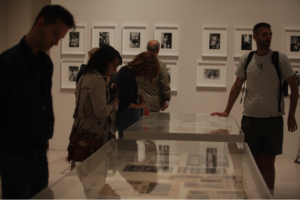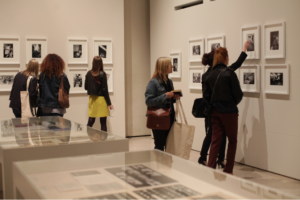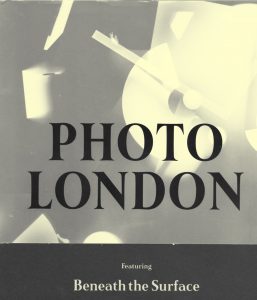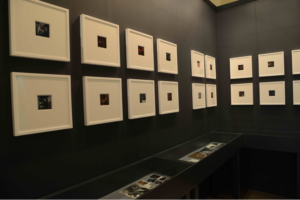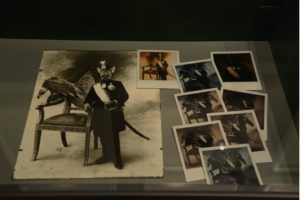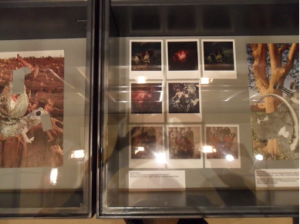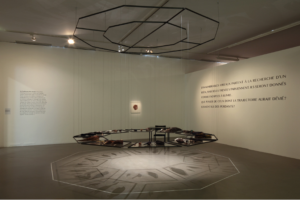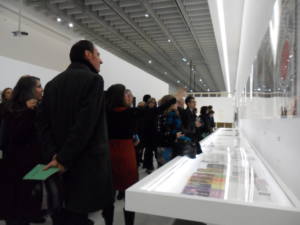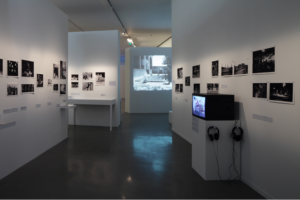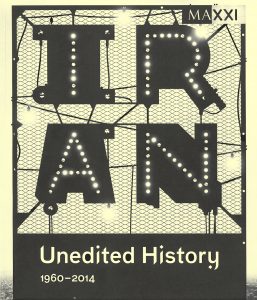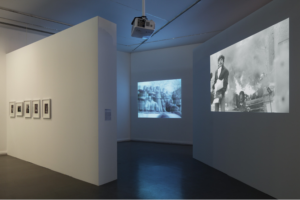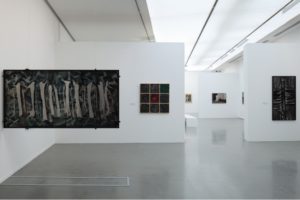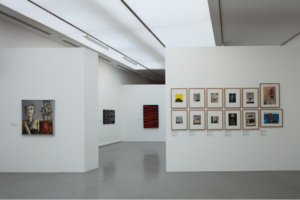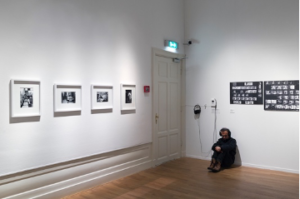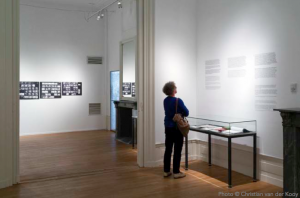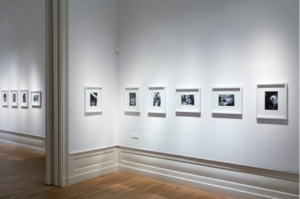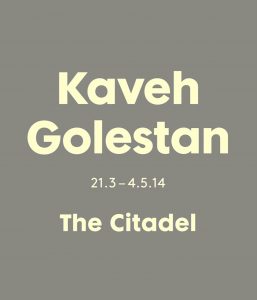UPCOMING Exhibitions
CURRENT Exhibitions
Surrealism Beyond Borders
Tate Modern
London | 24 February 2022 – 29 August 2022
The exhibition Surrealism Beyond Borders reconsiders the “movement” of Surrealism across boundaries of geography and chronology. This two-day series of conversations with leading scholars and artists continues to explore the issues raised in the exhibition, especially the blind spots, erasures, and challenges, and their consequences for thinking about Surrealism.
Past Exhibitions (Archive)
Surrealism Beyond Borders
The Metropolitan Museum of Art
New York City | 11 October 2021 – 30 January 2022
Surrealism Beyond Borders is organised by Tate Modern and The Metropolitan Museum of Art, New York. It is co-curated by Matthew Gale, Senior Curator at Large at Tate Modern, and Stephanie D’Alessandro, Leonard A. Lauder Curator of Modern Art and Senior Research Coordinator in Modern and Contemporary Art at The Met; with assistance at Tate Modern from Carine Harmand, Assistant Curator, International Art; and at The Met from Lauren Rosati, Assistant Curator, Leonard A. Lauder Research Center for Modern Art, and Sean O’Hanlan, Research Associate in Department of Modern and Contemporary Art.
To access the booklet of all in-gallery labels, click here.
Epic Iran
Victoria & Albert Museum
London | 29 May – 12 September 2021
Organised by the V&A with the Iran Heritage Foundation in association with The Sarikhani Collection. Curated by: Dr John Curtis (Academic Director, IHF), Tim Stanley (Senior Curator, V&A), Ina Sarikhani Sandmann (Director, the Sarikhani Collection), Sarah Piram (Project Curator, V&A), Dr Alex Magub (Exhibition Research Assistant, V&A), Astrid Johansen (Director of Operations, IHF).
A Story for the Future. MAXXI’s First Decade
MAXXI Museo nazionale delle arti del XXI secolo
Rome | 17 February – 29 August 2021
Curated by Hou Hanru with curatorial and research MAXXI team
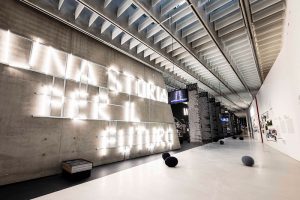
Recreating the Citadel
displacement-assemblage
University of Westminster, Graduate School
London | 17 May – 21 May 2021
Curated by the Hyphen Collective as part of displacement-assemblage, an exhibition of research practise.
Solidarity Spores:
A Call for the Spirit of the Non-Aligned Movement and the Third World Project
Asia Culture Centre
Gwangju | 13 May – 25 October 2020
Co-Curated by Bojana Piškur; Vali Mahlouji / Archaeology of the Final Decade; Seonghee Kim; Sulki and Min / Tetsuya Goto; Dongjin Seo; and Sungwon Kim
The exhibition is a call for the spirit of the Non-Aligned Movement and the Third World project, which made possible resistance against colonialism and imperialism, the desire for freedom and the vision for equality. Through art practice, the exhibition follows suit to the spirit of the Museo de la Solidaridad. At the start of this decade in 2020, why are we looking back at the Non-Aligned Movement that many deem to be an unsuccessful utopian project of the 20th century Cold War era? The reason may lie in the need to escape the ubiquitous conflicts and divisions arising from neoliberal globalization and the “elective affinity” with the spirit of the NAM that sought to independently establish a new world order.
Read the AOTFD press release
Read the exhibition catalogue
A Cultural Atlas: The Shifting Sands of Utopias(as artist)
Solidarity Spores
Asia Culture Centre
Gwangju | 13 May – 25 October 2020
My Atlas mines and conjures processes of global “reorientation” through a reconstruction of the gaze―subverting the single “reading” of West to ‘rest’ into a more cyclical model, engaging in cultural, philosophical, and political negotiations from East to East, East to West, South to East, South to South―constructing a panoramic exchange of global philosophical and artistic discourse. The project explores a fluid artistic exchange across time and space, geographies, histories, and forms over the past century and a half.

My Atlas’s historiographical/curatorial approach combines archaeological conceptions into an interactive structure as a base for artistic and cultural action. It conjures a fragmented history of the long twentieth century as well as contemporary history through the ambitions and contradictions of countless objectives: transcendental internationalisms; radical liberations; emancipating solidarities. A Cultural Atlas mines and maps a crucial landscape that echoes heterogeneous voices and forces, requiring harnessing the logics of current dystopias, A Cultural Atlas enhances strategic points of connections and conversions, delineating, foregrounding, and describing a parallel alternative reality to today’s algorithmic capitalist atomising post-coloniality, to harvest the principal motive of resistance. The mapping’s visual projection transforms the artwork into a panoramic view of recent intellectual history and a critical ideational reflection of emancipatory artistic, political, ethical, and spiritual international networks, revisiting the intersection of multiple modernisms, arts, and revolutions via radical aspirations. The embedded objects transport the viewer into a greater expanse of world history of contacts and alignments: films, sounds, texts and ephemeral objects from significant international cultural and political events, movements, thinkers, protagonists and beyond.
A Utopian Stage
Solidarity Spores
Asia Culture Centre
Gwangju | 13 May – 25 October 2020
This iteration expands the model of an art festival as A Post-Colonial Rewriting aligned with the Non-Aligned Movement of the 1950s-70s.
Recreating the Citadel (as artist)
Still I Rise: Feminisms, Gender, Resistance – Act 3
Arnolfini
Bristol | 14 September – 15 December 2019
Curated by Irene Aristizábal, Rosie Cooper and Cédric Fauq
The Recreating the Citadel research-artwork is an exposé of the erased history of Shahr-e No, the red light ghetto of Tehran, circa 1920-1980, in the context of the cultural revolution and Islamisation of post-revolutionary Iran. Still I Rise is a timely exhibition focusing on the his/her story of resistance movements and alternative forms of living from a gendered perspective.

Baalbek, Archives of an Eternity
Sursock Museum
Beirut | 28 June – 22 September 2019
Baalbek, Archives of an Eternity is an expansive historical survey of the 10,000 year-span of Baalbek. It reconstructs a complex network of histories, encompassing the pre-historic origins of the site, its rise to prominence, mythologies, functions, occupations, appropriations, its role in identity politics, its role in modern national and political agenda, and its contemporary reality. The historical exhibition is organised in nine chapters:
- 10,000 years (From the time of the earliest settlements to the present)
- A European-Organized Spectacle
- Archaeologies of Origins and Imperial Aspirations
- Photogeneity
- From Image to National Monument (The rise of Lebanese Baalbek)
- Popular Imagination
- Baalbek International Festival
- Modern City (The Battle of Baalbek)
- Citizens
The historical exhibition surveys archaeological, ethnological, anthropological, cultural, and artistic perspectives to unpack the history of Baablbek from origin to contemporary, to ascertain if, and how, Baalbek operates as a signifier, a point of reference, and an identity marker throughout history. Baalbek, Archives of an Eternity traces an epic stage of human drama through its many different lenses, dialogues, and perspectives – traversing ancient and modern; mythological and empirical; symbolic and material; world history and personal testimony; to its emblematic rise as the national brand of the modern nation of Lebanon.
View the virtual tour
Read the exhibition guide
A Utopian Stage
SAVVY Contemporary: The Laboratory of Form/Ideas
In conjunction with Berliner Festspiele and Mäerzmuzik,
Berlin | 24 March – 28 April 2019
Three music performances including Iannis Xenakis, Persepolis
An exhibition in three acts:
- Act I: The Shifting Sands of Utopias: A Cultural Atlas.
- Act II: The Excavated Archives.
- Act III: Invocations
Act I:The Shifting Sands of Utopias: A Cultural Atlas
The interactive and ongoing Cultural Atlas conjures a fragmented history of the long twentieth century through the ambitions and contradictions of countless utopian universalist episodes and ideals: transcendental internationalisms, radical liberations, emancipating solidarities.
Act II: Shiraz-Persepolis: The Excavated Archives
Archaeology of the Final Decade (AOTFD) unearths the archival materials of the radical and virtually-forgotten decade-long Festival of Arts, Shiraz-Persepolis (1967-1977). Over fifty years since its inception, A Utopian Stage explores the genealogies and implications of the festival’s modernist ambitions, using it as a lens through which to reconsider the legacies of modernism’s radical progressive arc. Embodying an optimistic drive to reimagine the world as an open universal arena for mutual exchange, the festival exalted in the dawn of the post-colonial age, aspiring to new solidarities and connections which marked the emergence of a potential new world.
Act III: Invocations
Invocations summons performative responses and critical conversations by an eclectic group of artists, performers, composers and thinkers who are invited to activate the contents, discourses, histories and points of reference relating to the radical and experimental spirits of the 1960s and 1970s. The open platform of Invocations invites responses, interpretations and engagements with the emancipating ambitions and contradictions of ‘the age of modernism and revolution’ and the transcendentalisms, internationalisms and the radical desires to unlock utopian potentials.
At SAVVY Contemporary the roving Invocations invited contributions from Vali Mahlouji, Bonaventure Soh Bejeng Ndikung, Kamila Metwaly, Reetu Sattar, Simon Wachsmuth, Mohammad Salemy, Maco (4 RUDE), Drummers of Joy, Slavs & Tatars, Satch Hoyt & Earl Harvin, Jihan El-Tahri with Hasan El-Malik and Jessica Ekomane.
Pictures from left to right:
Maco (4 RUDE), Butoh-Solo Invisible Friends. Simon Wachsmuth in Conversation with Vali Mahlouji. Bonaventure Soh Bejeng Ndikung. Slavs and Tatars, Red-Black Thread. Drummers of Joy. Jihan El-Tahri in conversation with Hasan El-Malik, Sounds of Erasure.
A Cultural Atlas: The Shifting Sands of Utopias (as artist)
Garage Museum of Contemporary Art
Moscow | 8 March – 26 May 2019
Exhibited in conjunction with the exhibition Rasheed Areen. A Retrospective.
The Shifting Sands of Utopias – A Cultural Atlas is a panorama of the intellectual history of the twentieth century. It reflects utopian and emancipatory intellectual artistic, political, ethical, and spiritual international networks, revisiting the intersection of modernism, art and revolution through radical aspirations of the twentieth century.
Recreating the Citadel
Rohtas 2 Gallery in collaboration with Lahore Literary Festival 2019
Lahore | 21 February – 12 March 2019
The research-artwork is an exposé of the erased history of Shahr-e No, the red light ghetto of Tehran, circa 1920-1980, in the context of the cultural revolution and Islamisation of post-revolutionary Iran.
Recreating the Citadel(as artist)
Still I Rise: Feminisms, Gender, Resistance – Act 2
de la Warr Pavilion
Bexhill-on-Sea | 9 February – 27 May 2019
Curated by Irene Aristizábal, Rosie Cooper and Cédric Fauq
The Recreating the Citadel research-artwork is an exposé of the erased history of Shahr-e No, the red light ghetto of Tehran, circa 1920-1980, in the context of the cultural revolution and Islamisation of post-revolutionary Iran.

Recreating the Citadel(as artist)
Hydra School Project
Hydra | June – September 2018
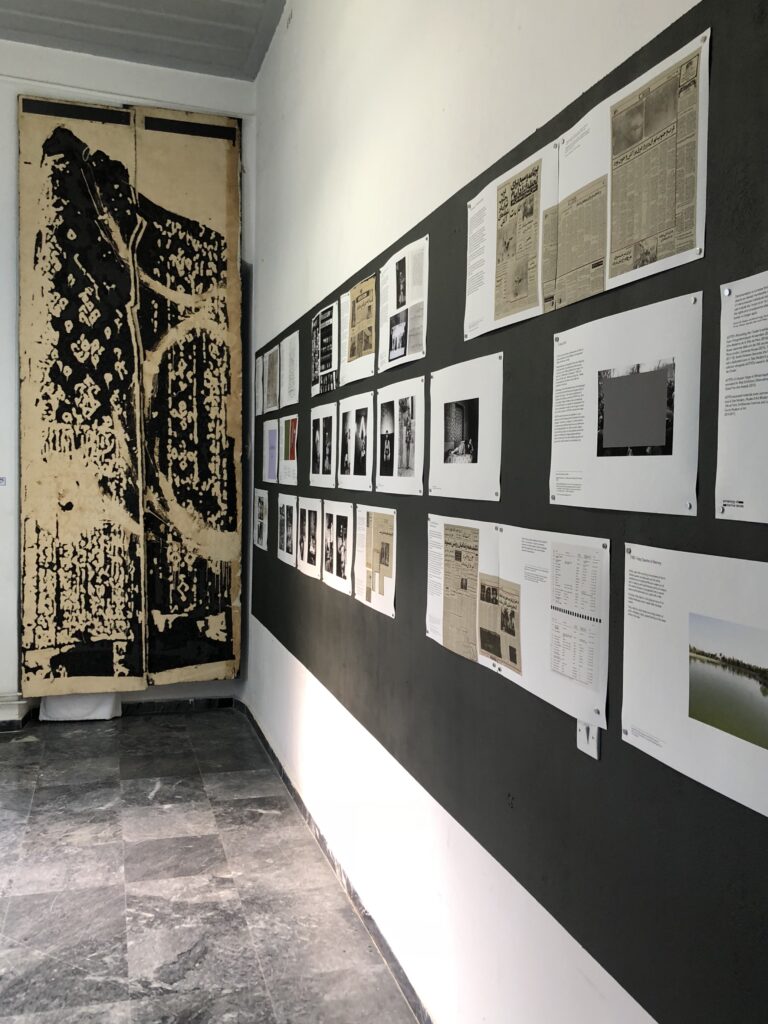
Recreating the Citadel(as artist)
artmonte-carlo, Contemporary Iran
Montecarlo | 27 – 29 April 2018
Dhaka Art Summit ’18
Dhaka | 2 – 10 February 2018
Chief Curator: Diana Campbell Betancourt. Guest Curators: Cosmin Costinas, Devika Singh, Vali Mahlouji, Amara Antilla, Alexie Glass-Kantor, Katya García-Antón, Maria Balshaw, Michelle Newton, Milovan Farronato, Shabbir Hussain Mustafa, Sharmini Pereira, Simon Castets.
DAS is unique in its ability to be a true hub for art and architecture related to South Asia. Expanding on the success of past editions, DAS 2018 extended its duration of exhibitions and programming to nine-days, and for the first time, widened its focus to create new connections between South, Southeast Asia, and the Indian Ocean belt, highlighting the dynamic evolution of art in contemporary South Asia and reviving historical inter-Asian modes of exchange. Over three hundred artists were exhibited across ten curated exhibitions, and over one hundred and twenty speakers from all over the world participated in sixteen panel discussions and two symposiums that grounded future developments of art in South Asia within the region’s rich, yet lesser-known, past.
A Utopian Stage
Dhaka | 2 – 10 February 2018
A Utopian Stage is a project examines the reverberations of 20th-century internationalisms, taking Shiraz-Persepolis (1967- 1977) as a case study and point of departure. In its manifestation at Dhaka Art Summit 2018, it evolved into a multifaceted project, in four acts including historical archives, contemporary live performances, new commissions, and a film festival.
ACT III: The Transnationally Roving Amphitheatre
below the levels where differences appear summons performative responses and critical conversations by an eclectic group of artists, performers, composers and thinkers who are invited to activate the contents, discourses, histories and points of reference relating to the radical and experimental spirits of the 1960s and 1970s. We invite the participants to zoom in and out of Cultural Atlas. The open platform of Invocations invites responses, interpretations and engagements with the emancipating aspirations and contradictions of ‘the age of modernism and revolution’ and the transcendentalisms, internationalisms and the radical desires to unlock utopian potentials.
At Dhaka Art Summit ‘18 below the levels… invited contributions from Hassan Khan, Goshka Macuga with Vali Mahlouji, Silas Riener (Merce Cunningham Trust), Reetu Sattar, Yasmin Jahan Nupur with Santal performers, and Lalon Baul singers. It took place in Bangladesh sponsored and presented by Dhaka Art Summit ‘18 and part-funded by Liverpool Biennial 2018 and New North and South. Designed by Vali Mahlouji
Photos from left to write (Courtesy of the artists, DAS ‘18, Liverpool Biennial 2018, New North and South and Archaeology of the Final Decade):
Like water on hot rocks, Goshka Macuga and Vali Mahlouji, Purity, Hassan Khan. Harano Sur (Lost Tune), Reetu Sattar.
ACT IV: A Film Programme
to be free is to lose sight of the shore is an eclectic film programme that conflates artist films, video documentations of live performances, historical documentaries and feature films to realise an ambivalent, exuberant, universal stage, where ideas and impulses can flourish.
At Dhaka Art Summit ‘18 to be free is to lose sight of the shore brought together works by diverse artists and filmmakers: Reza Abdoh, Larry Achiampong & David Blandy, Ashish Avikunthak, Shezad Dawood, Rose English, Rose Finn-Kelcey, William Greaves, Mikhail Kalatozov, Lindsay Kemp, William Klein, Lala Rukh, Goshka Macuga, Simon Moretti, Sergei Parajanov, Gillo Pontecorvo, Ousmane Sembène, Shuji Terayama and Stan VanDerBeek.
Photos from left to write (Courtesy of the artists): Preparatory Notes, Goshka Macuga. Hip-Hop Waltz of Eurydice, Reza Abdoh. The Emergency of Kali, Ashish Avikunthak. Ornamental Happiness, Rose English. Glory, Finn-Kelcey. It was a time that was a time, Shezad Dawood
A Utopian Stage: Festival of Arts, Shiraz-Persepolis (1967-77) – a video installation
Open Eye Gallery
Liverpool | 1 February 2017 – 30 June 2017
I know why the rebel sings
Ab-Anbar Gallery
Tehran | 21 April – 23 June 2017
Artist: Newsha Tavakolian
I know why the rebel sings is a comprehensive showcase range of Iranian photojournalist Newsha Tavakolian’s oeuvre, including previously unexhibited images of humanitarian tragedies around the world. It highlights the continuum in Tavakolian’s oeuvre, from art to photojournalism. With a focus on the portrait, these two genres are considered scintillatingly in conversation in her work.
A Utopian Stage: Festival of Arts, Shiraz-Persepolis (1967-77)
Bergen Assembly, Biennial Foundation
Bergen | 1 September – 2 October 2016

I know why the rebel sings
Singapore International Festival of Arts
Singapore | 23 June – 9 July 2016
Artist: Newsha Tavakolian
I know why the rebel sings
Prince Claus Principle Laureate Exhibition,
Prince Claus Fund
Amsterdam | 30 November 2015 – 4 April 2016
Artist: Newsha Tavakolian
From the terror of war to the oft-forgotten realities of those forced to pick up the pieces in its aftermath, this expansive exhibition of Newsha Tavakolian’s photography creates a fluid dialogue between her moving coverage of conflicts, her candid exposé of humanitarian tragedies and her aesthetic explorations of life in Tehran, with intimate forays into the private lives of friends and acquaintances. I know why the rebel sings, for the first time, integrates Tavakolian’s stirring warzone images and NGO projects with her more formally conceived portraits. It considers her photographic practice as a whole and examines her journalism as an integral component of it.
Kaveh Golestan: Prostitute 1975-77
Photo London 2015
London | 21 – 24 May 2015
Artist: Kaveh Golestan
The first UK exhibition of the late Iranian documentary photographer’s portraits taken between 1975–77 in the Citadel of Shahr e No (New Town), Tehran’s red-light district, a walled ghetto where 1,500 women lived and worked. The exhibition exposes the history of the Citadel being set on fire a few weeks before the victory of the revolution in 1979 (with an undisclosed number of residents trapped inside) and later demolished and erased. Golestan’s portraits are the last extant photographic record of the residents of the Citadel. Whether ravishing beauties or distressingly abused individuals, Golestan’s Prostitute series constitutes one of the most striking visual studies of femaleness produced in Iran.
A Utopian Stage: Festival of Arts, Shiraz-Persepolis
Whitechapel Gallery
London | 21 April – 4 October 2015
An Archaeology of the Final Decade Project: Az Div o Dad – Fantastical Polaroids of Kaveh Golestan
Art Modern Dubai
Dubai | 18 – 21 March 2015
Artist: Kaveh Golestan
The project exhibits the series entitled Az Div o Dad (Polaroids, 1976) by photographer Kaveh Golestan, exposed for the first time since 1978, a series of fantastical and surrealistic works that blend fairytale and history, appropriating found photographs and imagery from the 19th-20th centuries. Golestan created a series of innovative and striking Polaroids by moving collaged fragments in front of an open shutter over long exposures. Part acquired by LACMA and is presently on show at Tate Modern in the exhibition Surrealism Beyond Borders.
the story, like all stories is incomplete
Taymour Grahne Gallery
New York | 10 January – 20 February 2015
Artist: Rania Bellou
Curated by Vali Mahlouji, the exhibition centers around a found diary, dating back to 1940 and belonging to New York resident Margaret Becker. Reconstructing Margaret’s moments into her own, while visualizing and layering time, Bellou brings the diary to life in her most recent drawings accompanied by a projection, animation and a hand-stitched book of drawings.
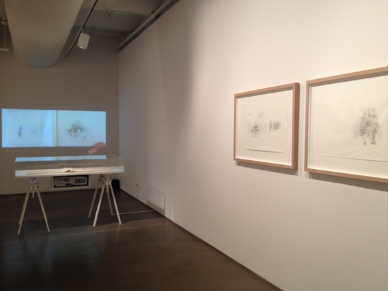
Read the press release and essay by Vali Mahlouji
Unedited History: Iran 1960 – 2014
MAXXI Museo nazionale delle arti del XXI secolo
Rome | 11 December – 29 March 2015
Co-Curated by Catherine David, Vali Mahlouji, Odile Burluraux, Narmine Sadegh, Morad Montazami.
Comprising over 200 works, for the most part never shown in France before, the exhibition brings a fresh eye to art and visual culture in Iran from the 1960s up to the present. The exhibition focuses on painting, photography and cinema, as well as key aspects of Iran’s modern visual culture. Whether already historic figures (Bahman Mohassess, Behdjat Sadr, Kaveh Golestan, Bahman Jalali) or members of the contemporary scene (Barbad Golshiri, Arash Hanaei and others), all the artists base their work on a critical approach to form and media. Down the generations, they have played their part in a reassessment of the way the political and social history of their country has been written. Its survey of the contemporary history of the country is arranged in sequences; the years 1960–1970, the revolutionary era of 1979, the Iran-Iraq war (1980–1988) and the post-war period up until today.
Read the exhibition mini-guide
Read the texts:
Unedited History: Iran 1960 – 2014
Musée d’Art Moderne de la Ville de Paris
Paris | 16 May – 24 August 2014
Co-Curated by Catherine David, Vali Mahlouji, Odile Burluraux, Narmine Sadegh, Morad Montazami.
Comprising over 200 works, for the most part never shown in France before, the exhibition brings a fresh eye to art and visual culture in Iran from the 1960s up to the present. The exhibition focuses on painting, photography and cinema, as well as key aspects of Iran’s modern visual culture. Whether already historic figures (Bahman Mohassess, Behdjat Sadr, Kaveh Golestan, Bahman Jalali) or members of the contemporary scene (Barbad Golshiri, Arash Hanaei and others), all the artists base their work on a critical approach to form and media. Down the generations, they have played their part in a reassessment of the way the political and social history of their country has been written. Its survey of the contemporary history of the country is arranged in sequences; the years 1960–1970, the revolutionary era of 1979, the Iran-Iraq war (1980–1988) and the post-war period up until today.
Kaveh Golestan: The Citadel
Foam Fotografiemuseum Amsterdam
Amsterdam | 21 March – 4 May 2014
Artist: Kaveh Golestan
The Citadel presents 45 vintage photographs from the series entitled Prostitute taken between 1975-1977 of women working in the Citadel of Shahr-e No, the red-light district of Teheran. The photographs are recirculated for the first time since 1978, alongside a historical timeline, social and political documents evincing the violence inflicted on the sex-workers post-revolution.
Read the AOTFD press release
Read the exhibition catalogue
